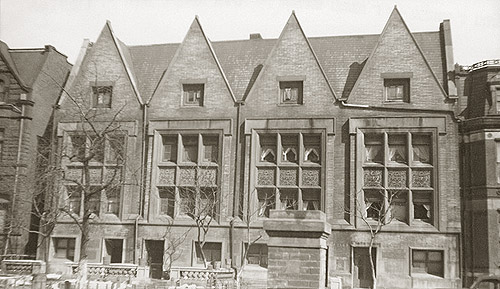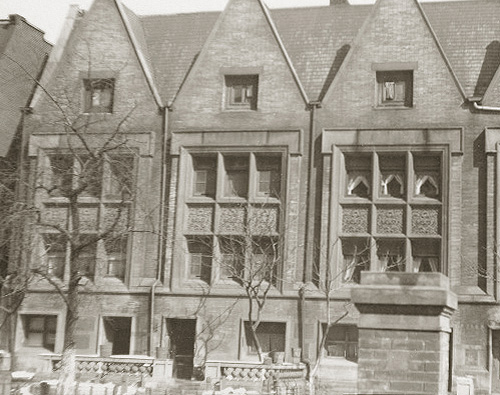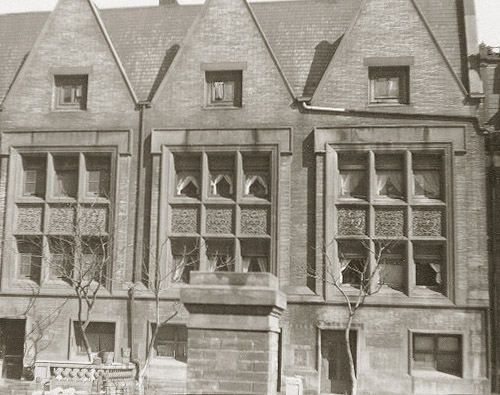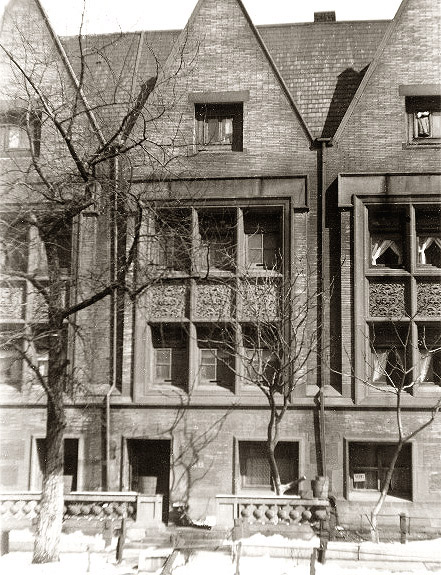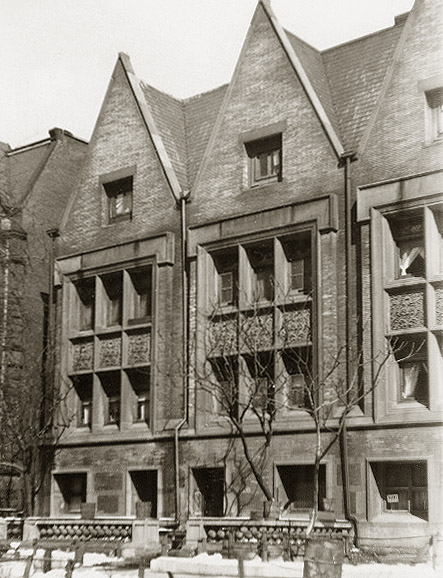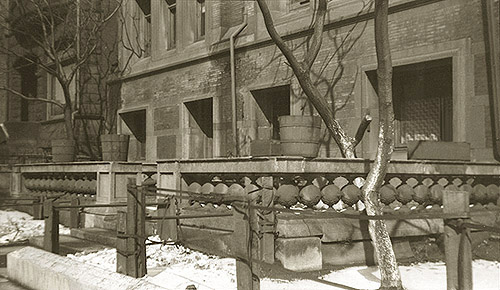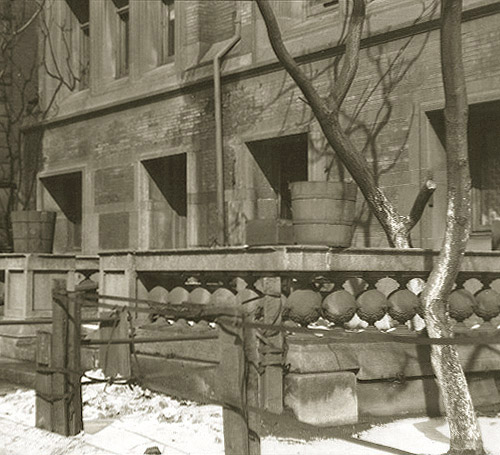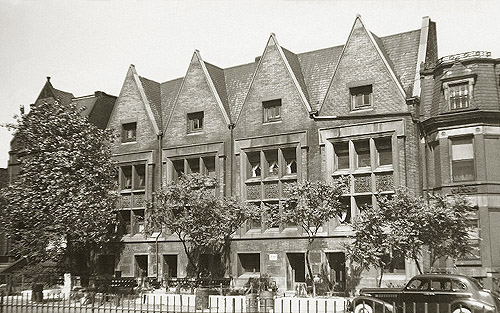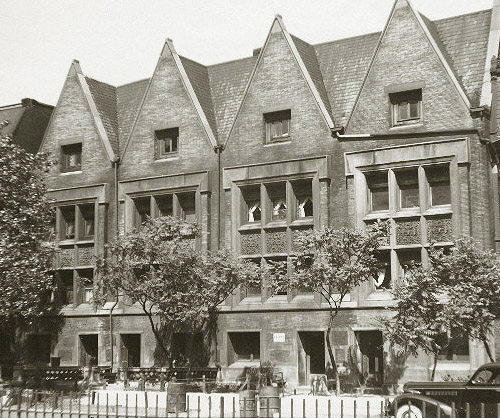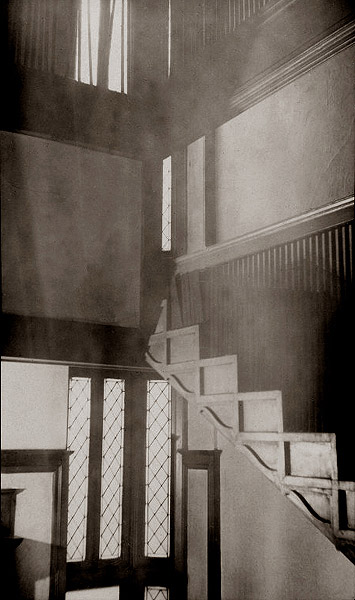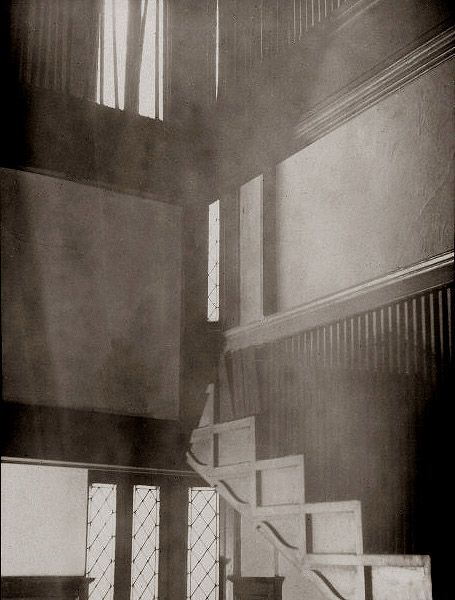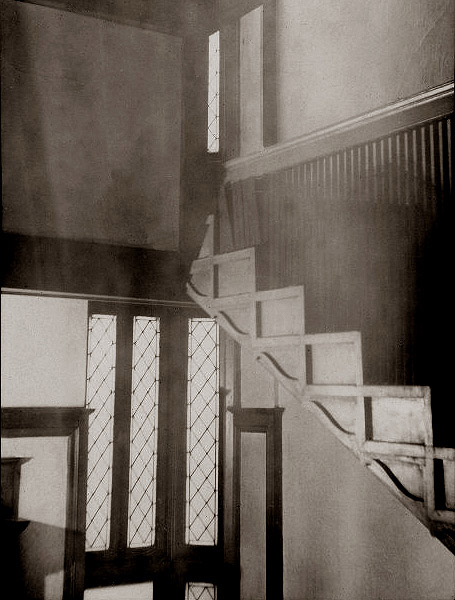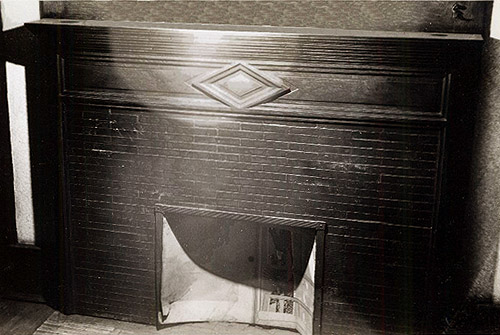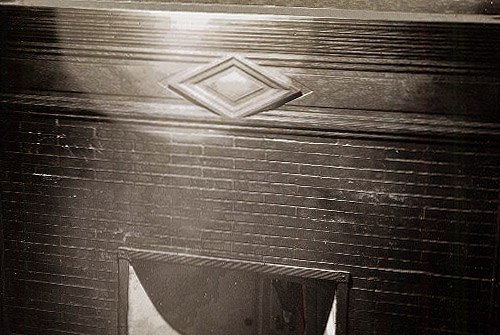Robert W. Roloson Rowhouses, Chicago, IL (1894) (S.026)
Photographs By Grant Carpenter Manson, Circa 1940
Grant Carpenter Manson (1904-1997). Architectural historian Grant Manson first met Mr. Wright in 1938. He had decided to make Wright the subject of his doctoral dissertation while at Harvard. He felt it essential to meet Wright and so in September he headed toward Spring Green from Massachusetts. Upon reaching Chicago, he placed a call to Spring Green and asked the operator “to put him through to Mr. Wright”. He heard his voice for the first time. Manson took photographs between 1937 and 1941 while researching for his doctoral dissertation titled “Frank Lloyd Wright's Work Before 1910". While a professor at the University of Pennsylvania, he elaborated his thesis and published his book “Frank Lloyd Wright to 1910: The First Golden Age" in 1958. Upon publication, Manson hand delivered a copy of the book to Wright in New York.
Manson “rediscovered” the Roloson Rowhouse in 1940 when he "happened upon them while driving along Calumet Avenue looking for some early Adler and Sullivan buildings". This collection of photographs are courtesy of the Oak Park Public Library, Grant Manson Collection. My assumption is that he photographed these in the winter upon discovering them, and then went back in the summer to photograph them again, or visa versa.
The images by Manson and Gilman are an invaluable record and are the most complete and only historic record of Wright's Roloson Rowhouses.1: Viewed from the West. Approximately 45 years after completion. Units pretty much unchanged. Balusters in front of unit three and four have been removed. Down spout between the third and fourth unit has been moved. The building on the left is now demolished. The building on the right is still existing. Photographed in the winter.
1a: Detail of the three left units. 1b: Detail of the three right units. 2: Detail of unit two, viewed from the West. One concept Wright used was to hide the entrance. Here he offsets the entrance through the balustrade so that it is not directly in front of the entrance. His drawings also indicates that he designed the front door to be deeply inset, the appearance of being hidden. Photographed in the winter.
3: Detail of unit one and two, viewed from the Southwest. Balusters still exist. Photographed in the winter.
4: Detail of balusters in front of unit one and two. Viewed from the Southwest. Photographed in the winter.
4a: Detail of balusters in front of unit two. The corner of the balustrade appears to be finished off, not cut, which would give the impression that the balusters in front of units three and four may never have been installed. But two extra corner squares that set off the entry in the balustrades are visible in image 5 in front of unit three and four. They are set at a different level which indicates they were salvaged and moved during the removal of the balusters in front of units three and four.
5: Similar to image 1 but photographed in the summer from the Southwest.
5a: Detail of image 5. Two extra balustrades corner squares are visible in front of unit three and four.
6: One of only a few interior images known to exist. Wright’s prairie style is evident and consistent with homes he designed during that time period. Horizontal trim, tight vertical spindles, the use of leaded glass windows.
6a: Interior detail.
6b: Interior detail.
7: Interior detail of fireplace.
7a: Detail of fireplace.
Text by Douglas M. Steiner, Copyright 2008 BACK
